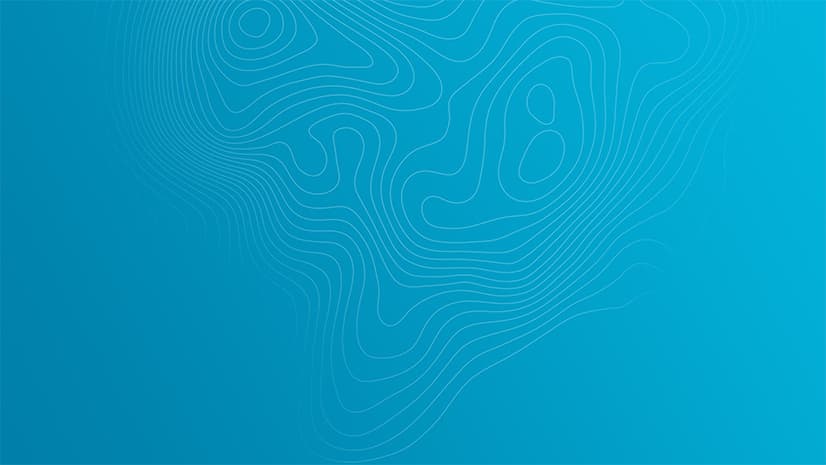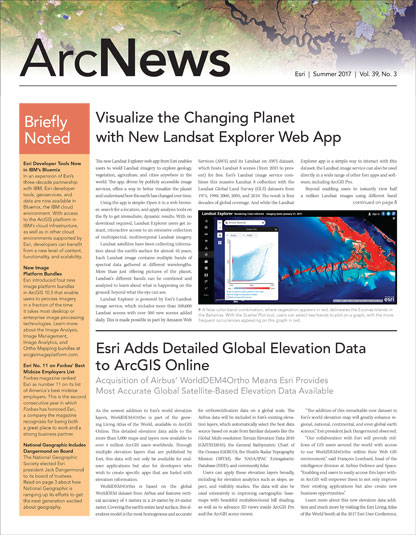
The International Cartographic Association (ICA) exists to stimulate, promote, and advance the cartographic discipline. While, at first glance, this might seem like a pretty static task, the context in which the basic principles of cartography are being applied is currently changing rapidly. That is why the ICA takes a diversified approach to teaching people and organizations sound cartographic and GIScience practices.
The primary way in which the ICA champions and enhances the field of cartography is via the activities of its commissions and working groups. The organization’s Commission on Education and Training, for example, is central to the ICA’s educative mission. The commission’s priority is to conduct workshops—both in person and online, and, at times, in conjunction with other ICA commissions—that especially transfer knowledge to ICA members in developing countries.
Additionally, the ICA has launched an initiative to offer welcome workshops to new ICA members. A country can select a topic based on one or more of the commissions’ profiles, and the ICA will send one or two representatives to run the workshop. The workshop can be used to bring together the local cartographic community, as well as to introduce attendees to new topics and enhance their skills on matters that are relevant to them. Recently, for example, the ICA conducted a workshop in Georgia on modern thematic mapping.
In a sense, all the activities organized by ICA’s commissions are related to education in some way or another. Participants engage in these activities to learn new things from their international colleagues. The organizers often make sure that younger attendees, such as PhD students and young professionals, get an opportunity to present their ideas and have discussions with more senior colleagues, who, in turn, pick up new insights from their more junior counterparts. This exchange of knowledge, experiences, and opinions is very valuable. And while this kind of self-education might not be as well organized as the curricula put together by universities, it is still constructive because it offers in-depth instruction in topics that might not (yet) be part of more conventional courses of study.
As far as more structured cartography courses go, though, scores of colleges and universities around the world offer at least basic cartography classes—and some even have specializations in cartography and GIS. The map below, from ICA’s Commission on Education and Training, shows a sampling of where these programs can be found.
There is still a need for traditional textbook learning as well. That is why in 2016, the ICA published an online book called The World of Maps in honor of International Map Year. The purpose of the book, which was put together by ICA’s Working Group of the International Map Year, is to broaden the general public’s knowledge about cartography and geographic information and instill a love of maps in schoolchildren especially. It is available in six different languages.
Another book, called the Geographic Information Science and Technology Body of Knowledge, allows anyone—students, teachers, or GIS professionals—to create a methodical course of study on GIS and related technologies. Published in 2006 by the American Association of Geographers and available online from the American University Consortium for Geographic Information Science, the book takes a comprehensive look at GIS and mapping technology and how society interacts with it. The cartography and visualization section covers, in a summative way, everything from the history and trends of cartography to the fundamentals of map design and interactive design techniques. Additionally, because societal and technical developments require curriculum of this sort to be updated constantly, the online version of the Body of Knowledge is now being revised by separate initiatives in North America and Europe.
With today’s unabating advances in technology, cartography is now a concern for a slew of new users. This raises the question of how to teach the foundations of cartography. To me, the following two points are most important. One should be able to
- Apply cartographic design principles to different kinds of geospatial/temporal data, taking data characteristics and user issues into account.
- Judge the appropriateness of applied design principles to existing maps.

And what about the tools? Here, it is important to be able to make judgments about the software defaults. Thematic maps, for example, often default to choropleth (showing different shades or patterns for distinct measurements), irrespective of the nature of the data. For online maps, the default map projection tends to be Mercator. But defaults like these are often not the correct solution!
Modes of education are also changing. In the past, students would get their information from live lectures and their accompanying textbooks. Today, however, this supply-driven approach—or teacher-centered learning—is not seen as the most appropriate method. On the contrary, a more demand-driven system—or student-centered learning—is finding its way into education. In this kind of flipped classroom (which nowadays is often partially virtual), students read and do an assignment first and then meet in class to discuss the results of their self-learning. Thus, the role of the teacher is now to lead discussions, answer questions, and fill in the gaps.
In a way, this is not far off from the educational options the ICA offers through its commissions. So perhaps we are beginning to bridge the gap between the structured classrooms and more amorphous learning environments that are both key to discovering and keeping up with the swiftly changing conditions in which cartography is applied.
About the Author
Menno-Jan Kraak is professor of geovisual analytics and cartography at the University of Twente in the Netherlands, where he has been teaching since 1996. He has a degree in cartography from the Faculty of Geographical Sciences at Utrecht University and received his PhD in cartography from Delft University of Technology. Kraak has written extensively on cartography and GIS. His book Cartography: Visualization of Spatial Data, written with Ferjan Ormeling, has been translated into five languages. He also wrote Mapping Time: Illustrated by Minard’s Map of Napoleon’s Russian Campaign of 1812, published by Esri Press in 2014. Kraak is a member of the editorial boards of several cartography journals, including the International Journal of Cartography. He currently serves as president of the International Cartographic Association.
Read other articles in “The Relevance of Cartography” series.

